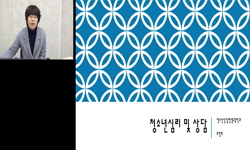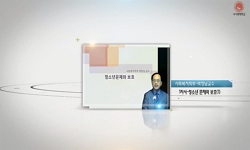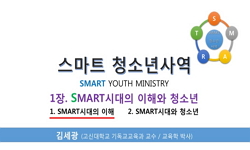As the media environment in the digital age has changed rapidly, the meaning of ‘active media use’ has evolved to include participation in production and distribution activities beyond the level of active decoding of media content. In particular, ...
http://chineseinput.net/에서 pinyin(병음)방식으로 중국어를 변환할 수 있습니다.
변환된 중국어를 복사하여 사용하시면 됩니다.
- 中文 을 입력하시려면 zhongwen을 입력하시고 space를누르시면됩니다.
- 北京 을 입력하시려면 beijing을 입력하시고 space를 누르시면 됩니다.
https://www.riss.kr/link?id=A107199206
- 저자
- 발행기관
- 학술지명
- 권호사항
-
발행연도
2020
-
작성언어
Korean
-
주제어
Teenager ; YouTuber ; Media producer ; Active user ; In-depth interview ; 청소년 ; 유튜버 ; 미디어 생산자 ; 능동적 이용자 ; 심층면접
-
KDC
070
-
등재정보
KCI우수등재
-
자료형태
학술저널
- 발행기관 URL
-
수록면
275-318(44쪽)
-
KCI 피인용횟수
3
- DOI식별코드
- 제공처
-
0
상세조회 -
0
다운로드
부가정보
다국어 초록 (Multilingual Abstract)
The purpose of this study is to understand the motivations and expected outcomes of video production activities on YouTube among Korean teenage Youtubers. The current study is generally based on a uses and gratifications theory perspective. In particular, this study attempts to redefine the concept of ‘active use of media’ or ‘active media user’ by focusing on individual Youtuber’s participation in media production and distribution activities. To achieve these research goals, we interviewed 30 adolescent YouTubers in summer of 2019. The interview questions consisted of (1) motivations for video production and YouTube activities, (2) YouTubers’ perceptions of helpers and barriers for their Youtube activities, and (3) perceived or expected outcomes of Youtube activities.
We found that the most important Youtube activity motivations among teenagers included recognition motivation, self-expression motivation, ‘career development motivation’, communication motivation, ‘entertainment motivation, and profit-making motivation. Among these six motivations, we found that ‘recognition motivation’ was the most common and most important motivation for teenage Youtubers to start, maintain, and reinforce their Youtube activities.
Regarding Youtuber’s perceptions of helpers and barriers for their Youtube activities, we found that the most frequently mentioned ‘help factor’ for the adolescent Youtubers was ‘positive response from audience’, while the most frequently addressed ‘barrier factor’ was the ‘lack of time to catch up with schoolwork’. Parents’ roles were ambivalent as both helpers and barriers. Parents’ support and positive feedback were critical help factors for many teenage YouTubers while parents’ negative comments were the most critical barriers for the teen’s Youtube activities.
In terms of expected outcomes, we found that most teenage YouTubers felt that there were more positive outcomes from YouTube activities than negative ones. What they expected as positive outcomes include ‘self-promotion outcomes’ such as self-confidence, self-efficacy, and self-expression competence and ‘relational outcomes’ such as increased quality of friendships and social relationships.
This study provides a new theoretical framework to understand active media uses of teenagers in the changing media environment. In particular, the results of this study will contribute to future research that would focus on further developing the concept of production and consumption-based active media use. Practically, what we learned from this study can be used to develop media literacy education programs for teenagers in the newly emerging media environment.
As the media environment in the digital age has changed rapidly, the meaning of ‘active media use’ has evolved to include participation in production and distribution activities beyond the level of active decoding of media content. In particular, teenagers have embraced such production-based active media use more enthusiastically than any other age groups. Youtube is one of the most important media platforms that Korean teenagers use to experience such active media use.
The purpose of this study is to understand the motivations and expected outcomes of video production activities on YouTube among Korean teenage Youtubers. The current study is generally based on a uses and gratifications theory perspective. In particular, this study attempts to redefine the concept of ‘active use of media’ or ‘active media user’ by focusing on individual Youtuber’s participation in media production and distribution activities. To achieve these research goals, we interviewed 30 adolescent YouTubers in summer of 2019. The interview questions consisted of (1) motivations for video production and YouTube activities, (2) YouTubers’ perceptions of helpers and barriers for their Youtube activities, and (3) perceived or expected outcomes of Youtube activities.
We found that the most important Youtube activity motivations among teenagers included recognition motivation, self-expression motivation, ‘career development motivation’, communication motivation, ‘entertainment motivation, and profit-making motivation. Among these six motivations, we found that ‘recognition motivation’ was the most common and most important motivation for teenage Youtubers to start, maintain, and reinforce their Youtube activities.
Regarding Youtuber’s perceptions of helpers and barriers for their Youtube activities, we found that the most frequently mentioned ‘help factor’ for the adolescent Youtubers was ‘positive response from audience’, while the most frequently addressed ‘barrier factor’ was the ‘lack of time to catch up with schoolwork’. Parents’ roles were ambivalent as both helpers and barriers. Parents’ support and positive feedback were critical help factors for many teenage YouTubers while parents’ negative comments were the most critical barriers for the teen’s Youtube activities.
In terms of expected outcomes, we found that most teenage YouTubers felt that there were more positive outcomes from YouTube activities than negative ones. What they expected as positive outcomes include ‘self-promotion outcomes’ such as self-confidence, self-efficacy, and self-expression competence and ‘relational outcomes’ such as increased quality of friendships and social relationships.
This study provides a new theoretical framework to understand active media uses of teenagers in the changing media environment. In particular, the results of this study will contribute to future research that would focus on further developing the concept of production and consumption-based active media use. Practically, what we learned from this study can be used to develop media literacy education programs for teenagers in the newly emerging media environment.
참고문헌 (Reference)
1 박혜준, "질적연구방법으로서의 면담" 학지사 [대한민국] 2009
2 Boyd, D., "소셜시대 십대는 소통한다: 네트워크화 된 세상에서 그들은 어떻게 소통하는가" 처음북스 2014
3 Wong, J. C., "‘It’s not play if you’re making money: How Instagram and YouTube disrupted child labor laws"
4 Wolcott, H. F., "Writing up qualitative research" Sage 1990
5 Shoham, M. D., "Writing on the wall an online community of YouTube patrons as communication network or cyber-graffiti" 3951-3960, 2013
6 Fuchs, C., "What Is Digital Labour? What Is Digital Work? What’s Their Difference? And Why Do These Questions Matter for Understanding Social Media? tripleC: Communication" 11 (11): 237-293, 2013
7 Katz, E., "Uses and gratifications research" 37 (37): 509-523, 1973
8 Leung, L., "User-generated content on the internet : an examination of gratifications, civic engagement and psychological empowerment" 11 (11): 1327-1347, 2009
9 McCracken, G., "The long interview" Sage 1988
10 Dutton, W. H., "The Internet in Britain" Oxford Internet Institute 2005
1 박혜준, "질적연구방법으로서의 면담" 학지사 [대한민국] 2009
2 Boyd, D., "소셜시대 십대는 소통한다: 네트워크화 된 세상에서 그들은 어떻게 소통하는가" 처음북스 2014
3 Wong, J. C., "‘It’s not play if you’re making money: How Instagram and YouTube disrupted child labor laws"
4 Wolcott, H. F., "Writing up qualitative research" Sage 1990
5 Shoham, M. D., "Writing on the wall an online community of YouTube patrons as communication network or cyber-graffiti" 3951-3960, 2013
6 Fuchs, C., "What Is Digital Labour? What Is Digital Work? What’s Their Difference? And Why Do These Questions Matter for Understanding Social Media? tripleC: Communication" 11 (11): 237-293, 2013
7 Katz, E., "Uses and gratifications research" 37 (37): 509-523, 1973
8 Leung, L., "User-generated content on the internet : an examination of gratifications, civic engagement and psychological empowerment" 11 (11): 1327-1347, 2009
9 McCracken, G., "The long interview" Sage 1988
10 Dutton, W. H., "The Internet in Britain" Oxford Internet Institute 2005
11 Rubin, A. M., "Television use by children and adolescents" 5 (5): 109-120, 1979
12 Williams, F., "Technology and communication behavior" Wadsworth Publishing Company 1987
13 Livingstone, S., "Taking up Online Opportunities? Children's Uses of the Internet for Education, Communication and Participation" 1 (1): 395-419, 2004
14 Livingstone, S., "Taking risky opportunities in youthful content creation : teenagers' use of social networking sites for intimacy, privacy and self-expression" 10 (10): 393-411, 2008
15 Khan, M L., "Social media engagement : What motivates user participation and consumption on YouTube?" 66 : 236-247, 2017
16 Swist T, "Social Media and the Wellbeing of Children and Young People: A Literature Review" Commissioner for Children and Young People 2015
17 Miles, M. B., "Qualitative data analysis : A sourcebook of new methods" Sage 1984
18 Kotler, P., "Prosumers: A New Type of Customer" 24-28, 1986
19 Livingstone, S., "Parenting for a digital future" LES Thinks, London School of Economics and Political Science
20 Livingstone, S., "Parental Mediation of Children's Internet Use" 52 (52): 581-599, 2008
21 Music, G., "Nurturing natures : Attachment and children’s emotional, sociocultural and brain development" Psychology Press 2010
22 Jandl, S., "Negotiating Youth Cultures Intermedially : YouTubers, Vlogging and Teenagers" 1 : 1-18, 2018
23 Shapiro, M. A., "More than entertainment : YouTube and public responses to the science of global warming and climate change" 54 (54): 115-145, 2015
24 Rubin, A. M., "Media effects : Advances in theory and Research" Lawrence Erlbaum Associates 1994
25 Livingstone, S., "Media Literacy and the challenge of new information and communication technologies" 7 (7): 3-14, 2004
26 Ofcom, "Media Literacy Audit: Report on Media Literacy amongst Children" Office of Communications 2006
27 International Telecommunication Union (ITU), "Measuring the information society 2013: measuring the world’s digital natives"
28 Tuchow, R., "Inside Ryan ToysReview’s linear TV strategy"
29 Livingstone, S., "How children engage with the internet" Tedx Talks
30 Livingstone, S., "Gradations in Digital Inclusion : Children, Young People and the Digital Divide" 9 (9): 671-696, 2007
31 Terranova, T., "Free Labor : Producing Culture for the Digital Economy" 18 (18): 33-58, 2000
32 Chen, C. P., "Forming digital self and parasocial relationships on YouTube" 16 (16): 232-254, 2016
33 Prensky, M., "Digital Natives, Digital Immigtants" 9 (9): 1-6, 2001
34 Livingstone, S., "Children and young people’s rights in the digital age : An emerging agenda" 19 (19): 657-670, 2017
35 Livingstone, S., "Balancing opportunities and risks in teenagers’ use of the internet : the role of online skills and internet self-efficacy" 12 (12): 309-329, 2009
36 Jimenéz, A. G., "Adolescents and Youtube: Creation, participation and consumption" 60-89, 2016
37 Livingstone, S., "A companion to media studies" Blackwell 337-359, 2003
38 SmartyPants, "2019 Brand love study : Top 50 brands among kids ages 6-12"
동일학술지(권/호) 다른 논문
-
대한민국은 지난 20년간 ‘북한’과 ‘통일’을 어떻게 보았는가? 언론 보도 빅데이터 분석 및 국민 인식 종단연구
- 한국언론학회
- 박종민(Jongmin Park)
- 2020
- KCI우수등재
-
우리는 어떤 로봇을 만들어가고 있는가? 2010-2019 텔레비전 뉴스에 등장한 인공지능 로봇의 전달 방식과 특성에 관한 탐색적 연구
- 한국언론학회
- 손승혜(Seunghye Sohn)
- 2020
- KCI우수등재
-
기업의 정당성과 지속가능성 커뮤니케이션 : 지속가능성 정보공시의 결정요인에 관한 비교분석
- 한국언론학회
- 윤태일(Tae-Il Yoon)
- 2020
- KCI우수등재
-
지각된 메시지 효과성은 실제 메시지 효과를 얼마나 반영하는가? 설득 캠페인 메시지의 지각된 효과와 실제 효과
- 한국언론학회
- 이병현(Byeong-Hyeon Lee)
- 2020
- KCI우수등재
분석정보
인용정보 인용지수 설명보기
학술지 이력
| 연월일 | 이력구분 | 이력상세 | 등재구분 |
|---|---|---|---|
| 2022 | 평가예정 | 계속평가 신청대상 (등재유지) | |
| 2017-01-01 | 평가 | 우수등재학술지 선정 (계속평가) | |
| 2013-01-01 | 평가 | 등재학술지 유지 (등재유지) |  |
| 2010-01-01 | 평가 | 등재학술지 유지 (등재유지) |  |
| 2008-01-01 | 평가 | 등재학술지 유지 (등재유지) |  |
| 2006-01-01 | 평가 | 등재학술지 유지 (등재유지) |  |
| 2004-01-01 | 평가 | 등재학술지 유지 (등재유지) |  |
| 2001-07-01 | 평가 | 등재학술지 선정 (등재후보2차) |  |
| 1999-01-01 | 평가 | 등재후보학술지 선정 (신규평가) |  |
학술지 인용정보
| 기준연도 | WOS-KCI 통합IF(2년) | KCIF(2년) | KCIF(3년) |
|---|---|---|---|
| 2016 | 1.75 | 1.75 | 1.94 |
| KCIF(4년) | KCIF(5년) | 중심성지수(3년) | 즉시성지수 |
| 2.07 | 2.11 | 2.773 | 0.4 |





 DBpia
DBpia






